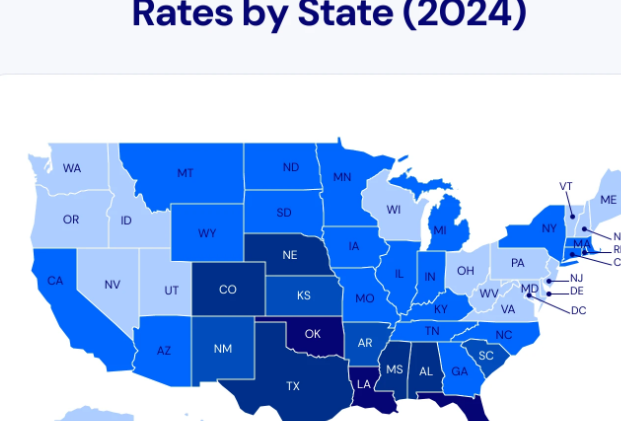Health Insurance Plans
Navigating the world of health insurance can be overwhelming, especially with the myriad options available today. Health Insurance Plans are essential for managing healthcare costs and ensuring access to medical services when needed. Whether you are an individual seeking coverage or a family looking to protect your loved ones, understanding the nuances of health insurance is crucial.
Health insurance serves as a safety net, providing financial protection against unexpected medical expenses. In this review, we will explore the various features, specialties, and uses of health insurance plans. Additionally, we will discuss their main themes, along with the pros and cons associated with these plans. By the end of this review, you will have a clearer understanding of how to choose the right health insurance plan for your needs.
Feature of Health Insurance Plans
Health insurance plans come with a range of features designed to provide coverage for various medical services. Understanding these features can help you make an informed decision when selecting a plan.
1. Comprehensive Coverage
Most health insurance plans offer comprehensive coverage that includes a wide array of medical services. This typically encompasses:
- Hospitalization: Coverage for inpatient services, including surgeries and overnight stays.
- Outpatient Care: Services received without being admitted to a hospital, such as doctor visits and minor procedures.
- Preventive Services: Regular check-ups, vaccinations, and screenings aimed at preventing illnesses.
- Emergency Services: Coverage for emergency room visits and urgent care.
2. Network of Providers
Health insurance plans often operate within a network of healthcare providers. Understanding the network can help you choose a plan that aligns with your preferences:
- In-Network Providers: These are healthcare professionals and facilities that have agreed to provide services at negotiated rates with the insurance company. Choosing in-network providers typically means lower out-of-pocket costs.
- Out-of-Network Providers: While you can still receive care from these providers, your costs will generally be higher. Some plans, like PPOs, offer more flexibility in choosing out-of-network providers, albeit at a higher cost.
3. Cost-Sharing Features
Cost-sharing is a fundamental aspect of health insurance, encompassing various financial responsibilities you may encounter:
- Premium: The monthly payment you make to maintain your health insurance coverage.
- Deductible: The amount you must pay out-of-pocket for covered services before your insurance kicks in.
- Co-payment (Co-pay): A fixed amount you pay for specific services, such as doctor visits or prescription medications.
- Coinsurance: The percentage of costs you share with your insurance provider after reaching your deductible.
4. Prescription Drug Coverage
Most health insurance plans include a formulary, which is a list of covered prescription medications. Understanding the prescription drug coverage can save you money on necessary medications. Plans may categorize drugs into tiers, affecting the cost you pay at the pharmacy.
5. Additional Benefits
Many health insurance plans offer additional benefits that enhance the overall coverage:
- Telehealth Services: Virtual consultations with healthcare professionals, making it easier to access care from home.
- Mental Health Services: Coverage for mental health treatment, including therapy and counseling.
- Wellness Programs: Initiatives aimed at promoting a healthy lifestyle, often providing incentives for participating in health-related activities.
Specialty of Health Insurance Plans
Health insurance plans can be tailored to meet the unique needs of individuals and families. Here are some specialties that differentiate various health insurance options:
1. Employer-Sponsored Plans
Many individuals receive health insurance through their employers. These plans often provide a variety of options, including HMOs, PPOs, and EPOs. Employer-sponsored plans may offer lower premiums due to shared costs between employers and employees.
2. Government Programs
Several government programs cater to specific populations, offering subsidized or low-cost health insurance options:
- Medicare: A federal program primarily for individuals aged 65 and older, covering hospital care, outpatient services, and prescription drugs.
- Medicaid: A state and federal program providing coverage for low-income individuals and families, including children and pregnant women.
- CHIP (Children’s Health Insurance Program): A program that offers low-cost health insurance for children in families with incomes too high to qualify for Medicaid but too low to afford private coverage.
3. Marketplace Plans
The Health Insurance Marketplace allows individuals and families to shop for and compare health insurance plans. These plans are often available for those who do not qualify for employer-sponsored coverage or government programs. Marketplace plans offer various coverage levels, allowing consumers to choose plans that fit their needs and budgets.
4. Specialized Plans
Certain health insurance plans cater to specific demographics or healthcare needs:
- Short-Term Health Insurance: Temporary coverage for individuals in transition between plans or those who need coverage for a limited time.
- Dental and Vision Insurance: Often sold as add-ons to standard health insurance plans, these provide coverage for routine dental and eye care.
- Critical Illness Insurance: Provides a lump sum payment upon diagnosis of a serious illness, helping cover expenses not included in standard health insurance.
Uses of Health Insurance Plans
Health insurance plans serve several essential purposes, making them a critical component of healthcare access:
1. Financial Protection
The primary use of health insurance is to protect individuals and families from high medical costs. Without insurance, a single hospital stay or emergency procedure could result in overwhelming financial burdens. Health insurance mitigates these risks by covering a significant portion of healthcare expenses.
2. Access to Healthcare Services
Having health insurance increases access to necessary medical services. Insured individuals are more likely to seek preventative care, leading to better health outcomes and early detection of potential issues.
3. Peace of Mind
Health insurance provides peace of mind, knowing that you are financially protected against unexpected medical events. This reassurance can reduce stress and anxiety related to potential healthcare expenses.
4. Encouraging Preventive Care
Health insurance plans often cover preventive services at no cost to the insured. This promotes regular check-ups, screenings, and vaccinations, fostering a proactive approach to health management.
Main Theme of Health Insurance Plans
The overarching theme of health insurance plans revolves around providing financial security and access to quality healthcare. Health insurance serves as a vital tool for individuals and families, ensuring they receive the medical attention they need without facing exorbitant costs.
1. Empowerment Through Choice
Health insurance plans empower individuals to make informed choices regarding their healthcare. With various plan options available, consumers can select the coverage that best aligns with their needs, budget, and lifestyle.
2. Promoting Health Equity
Access to health insurance is a crucial factor in promoting health equity. By expanding coverage options and making healthcare more affordable, health insurance plans contribute to reducing disparities in health outcomes among different populations.
3. Fostering Long-Term Wellness
By encouraging preventive care and regular check-ups, health insurance plans promote long-term wellness. Individuals who utilize their insurance for preventive services are more likely to maintain good health, ultimately benefiting both the individual and the healthcare system.
Pros and Cons of Health Insurance Plans
| Pros | Cons |
|---|---|
| Financial Protection: Covers a significant portion of healthcare costs, reducing out-of-pocket expenses. | Costly Premiums: Monthly premiums can be expensive, especially for comprehensive plans. |
| Access to Care: Ensures access to a network of healthcare providers and facilities. | Complex Terms: Understanding the intricacies of different plans can be challenging. |
| Preventive Services: Many plans cover preventive care at no cost, promoting overall health. | Limited Coverage: Some services may not be covered or may have strict limitations. |
| Peace of Mind: Provides reassurance knowing that medical expenses are covered in emergencies. | Out-of-Pocket Costs: Deductibles, co-pays, and coinsurance can still add up. |
Conclusion: Health Insurance Plans
In conclusion, Health Insurance Plans are a vital component of modern healthcare, providing financial protection, access to necessary services, and promoting overall well-being. With a variety of options available, individuals can choose plans that cater to their specific needs and preferences.
When selecting a health insurance plan, it is essential to consider factors such as coverage options, network providers, cost-sharing features, and any additional benefits. By taking the time to evaluate your personal health needs and budget, you can make an informed decision that ensures you and your family are protected.
Investing in health insurance is an investment in your health and future. With the right plan, you can navigate the healthcare landscape with confidence, knowing that you have the support and resources you need.
FAQs: Health Insurance Plans
- What is the difference between HMO and PPO plans?
- HMO (Health Maintenance Organization) plans require members to choose a primary care physician and get referrals for specialist care, while PPO (Preferred Provider Organization) plans offer more flexibility in choosing providers without the need for referrals.
- How can I lower my health insurance costs?
- To lower costs, consider increasing your deductible, opting for a health savings account (HSA), and shopping around for plans during open enrollment. Additionally, maintaining a healthy lifestyle can lead to lower premiums.
- Are pre-existing conditions covered in health insurance plans?
- Under the Affordable Care Act (ACA), health insurance plans cannot deny coverage or charge higher premiums based on pre-existing conditions.
- What is the significance of an out-of-pocket maximum?
- The out-of-pocket maximum is the most you will pay for covered healthcare services in a plan year. Once you reach this limit, your insurance will cover 100% of your healthcare costs for the rest of the year.




